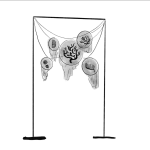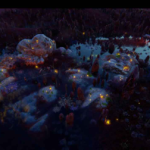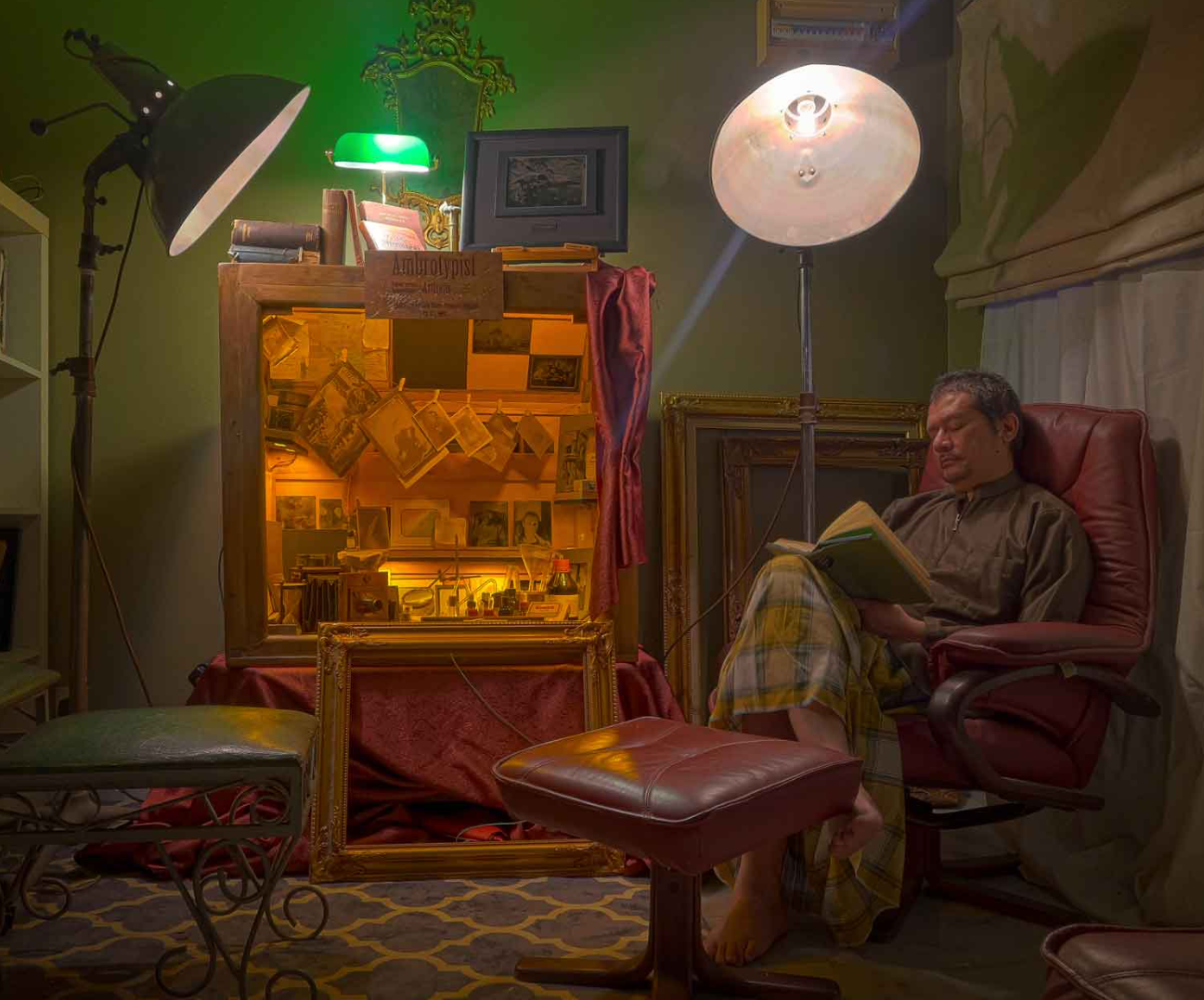
The Last Glow

27 Years of Lazarian Delights

The Last Glow

27 Years of Lazarian Delights
The Silver Lining
Asst. Prof. Dr. Khairul Azril Bin Ismail
Mrs. Nik Anis Kartini Binti Nik Ramzi Shah

This overall research project makes use of photographic historical practice as an investigative tool, through which a variety of strategies have been employed in order to imagine the appropriate visual mnemonics arrives from the traditional photographic portrait studio. The project provides a context within which to understand this art practice and expands upon and develops the themes in synchronously depicts that Art and Science are never apart from its fundamental core of rigour and values.
The history of the photographic showcase here is presented in traditional narrative form and as a discursive formation, being analysed at two specific junctures within this narrative. This historical and visual contextualisation allows the imageries to be viewed in terms of space and apparatus that embody particular characteristics of all things that are seemingly raw and fundamentally handcrafted towards its own nostalgic appeal that never ceased. It is suggested that whilst these characteristics are explicitly located within discourses relating to aesthetics, these works also incorporate an implicit psychical dimension.
As image objects within this box (which stood out from apparatuses, chemical compounds of silver, gold and platinum that makes up the imageries produced) that embodies the presence of the needed intimate gaze. The possibility of transference as of knowledge in this practice had been posited as best as one created to the actual practice since the 19th Century, and concludes with a reflection on how such practice produced was both conceived and executed in relation to theory, but also on how it can be thought of as providing a unique and valuable contribution to knowledge in and of itself.
The techniques made not only makes apparent a coercive discourse and academic reasonings that exists within these photographic practise, but it also stimulates a particularly compelling and pertinent analysis of how the two; Art and Science, are all part and parcel of what once we all knew as the field of ‘natural philosopher’.


